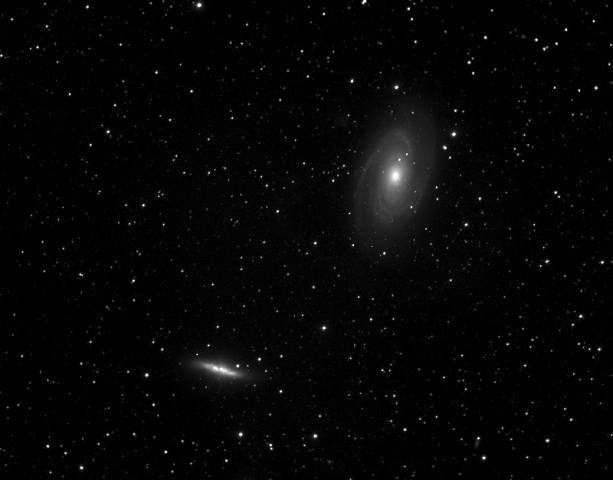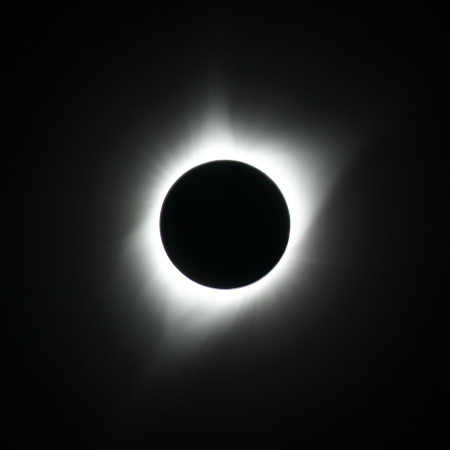Forum Replies Created
-
AuthorPosts
-
 Grant PrivettParticipant
Grant PrivettParticipantHave never heard of Real VNC – its 25years since I networked anything. Lots to read. Thanks.
 Grant PrivettParticipant
Grant PrivettParticipantThanks for that. The only colleague I could find who had used one much in anger was merely feeding keyboard and mice down one Cat5. Unsurprisingly, he didnt have much problem.
 Grant PrivettParticipant
Grant PrivettParticipantYou have a dew zapper. Do you ever get ice or dew on the corrector plate of the C11?
 Grant PrivettParticipant
Grant PrivettParticipantThats an interesting presentation. Am I reading that right? The 1pps pulse goes straight into what appears to be an Arduino GPIO – should work!
 Grant PrivettParticipant
Grant PrivettParticipantYes, the slow speed (4800 or 9600) of the serial comms links many receivers use worried me and I know that several that are ostensibly USB actually use a USB/Serial interface internally and so are just as bad. I noticed that to get round this the NMEATIME2 shareware uses a Kalman filter to filter NMEA arrival times and manages to get an accuracy down into the single milliseconds.
I’m told – would have to check old emails for detail – that the 1pps is very accurate long term (so count 100 pulses and the average interpulse time will average very close to 1000ms) but the individual arrival time of a pulse is still somewhat dithered – on some hardware.
Can dig out the emails if you are interested.
 Grant PrivettParticipant
Grant PrivettParticipantAnd whatever happens it will only be as good as your time signal accuracy…
14 February 2018 at 11:30 pm in reply to: BAA DVD/Blu-ray record of the 2017 August 21 total solar eclipse #579127 Grant PrivettParticipant
Grant PrivettParticipantSo, on eclipse day you were in a jeep too Martin. We were in the back of a jeep driven by the operator of the 88″. Woke to pouring rain and no hope, but the guy – who could have gone to the top of Mauna Kea (being observatory staff and able to get past the police cordon) if he hadnt stuck with us – went to the saddle road and waited.
Managed to see it through fog – so stuff all corona apart from prominences but binoculars showed the structure in the inner corona despite the fog. No Cat Stevens (happily) but there was a burst of Robert Plant’s Manic Nirvana before we left base in Hilo that morning.
 Grant PrivettParticipant
Grant PrivettParticipantJust an update: I have been out with the RASA on two nights so far – 11th and 13th – and not yet had trouble with dew forming on the corrector plate – even in the absence of a shield. Hiwever, neither was a wet night (it was -1C and -5C respectively) but there were hard frosts (really hard last night). Will update again when I have used it on a night when water is running off the mount or pier.
 Grant PrivettParticipant
Grant PrivettParticipantA friend has tried a Canon 450 on it but nothing bigger yet. The Starlight 56 has too big a body – the issue being the shutter. The Starlight 25 would be a nice start or better still a 35. However, I don’t have access to anything bigger and so cannot oblige. Anyone want to lend me one? 🙂
I think Celestron have said that wings of the focal plane should run off to 60-70% of peak. The 14″ version is better controlled and is corrected better for wavelengths beyond 800nm.
12 February 2018 at 8:38 pm in reply to: BAA DVD/Blu-ray record of the 2017 August 21 total solar eclipse #579116 Grant PrivettParticipant
Grant PrivettParticipantDark Side of the Moon?
 Grant PrivettParticipant
Grant PrivettParticipant

Finally got some quality time with the Celestron 11″ RASA. The attached image is M81 and M82 – though I rather suspect you all knew that. I used a venerable Starlight H18 for 15 unguided 60s frames last night. The focus was a little off – my fault not the scope – and also the camera body is not properly aligned with the focal plane after some changes made to ensure it worked with a Canon lens adaptor. So, this pretty much suggests that someone doing the job properly will get quite a nice result.
I liked the focuser, the quality of the images and the speed of the system, but it has made it very clear I need to sort out the cable mess I have before I go much further. I’m not used to wires coming of the scope front – not after using a RC for a while.
I tried deleting one of the images but lost both, so two it is…
 Grant PrivettParticipant
Grant PrivettParticipantSounds very nice. Have wondered about corrugated as an alternative to the stuff used for conservatory roofs. Ensures good airflow of course.
I think the USAF observatory on Haleakala has it sorted. The roof opens and the circular walls are lowered to expose the whole sky. Don’t think I could make that work in our garden though. 🙂
 Grant PrivettParticipant
Grant PrivettParticipantIf anyone is likely to be interested, but nothing will happen for a few months as we moved house in December and I have the new one to sort out (plasterer due tomorrow, new boiler next month, kitchen to rebuild etc) – theres always stuff needs doing. Thats the real world. 🙂
I have promised to post a first impression on the Celestron 11″ RASA I sometimes use. Tonight would have been perfect, but my poorly wife needs tea, sympathy and general looking after. Sundays forecast looks hopeful too.
 Grant PrivettParticipant
Grant PrivettParticipantHow much did these weigh? Thats astonishing.
 Grant PrivettParticipant
Grant PrivettParticipantIt is sounding like a decent shed frame of at least 8ftx8ft dimension, with a clear plastic pent roof (possibly underlaid with aluminium foil) and thermally lined, preferably with a drop down side, is a hopeful way forward. I can always look at whats available commercially off the shelf and do some hacking.
 Grant PrivettParticipant
Grant PrivettParticipant9’6″ x 9’6″ (3m?) sounds about right I think given the size of that scope – or you would be hanging over the walls. I’ve worked comfortably with a scope and small foldup table in a 9ftx9ft. I am wondering if 8ftx8ft is just a bit too snug. But if I can set the thing up for remote use (30ft away in the lounge) would even 7ftx7ft be enough?
Separate note. Is that a MkIV Fullerscopes mount? They were hefty.
 Grant PrivettParticipant
Grant PrivettParticipantThats surprising – one of our plastic garden stores does occasionally get condensation. You would think the plastic would have the same problem as the POD. Perhaps its borderline. I think I would take the precaution of lining to some extent – if it doesnt make the whole thing too heavy.
Yeah, some spiders must be very keen astronomers, they gravitate to optics. Rather like the family of earwigs that once took possession of my Fullerscopes MkIV mount….
5 February 2018 at 9:38 pm in reply to: BAA DVD/Blu-ray record of the 2017 August 21 total solar eclipse #579064 Grant PrivettParticipant
Grant PrivettParticipantThanks for the headsup! It was a lovely sight. Heres a reminder….

 Grant PrivettParticipant
Grant PrivettParticipantHas been suggested here that wooden observatories are – at least while maintained – fairly benign environments, but that 8ftx8ft would represent a minimum size. Does that fit in with everyone elses views? I have found a 9ftx9ft shed usable and the circular Skyshed POD quite tight with its 2.4m radius.
 Grant PrivettParticipant
Grant PrivettParticipantI hear that leaving LED night lights on in a shed discourages bats from roosting too!
-
AuthorPosts
